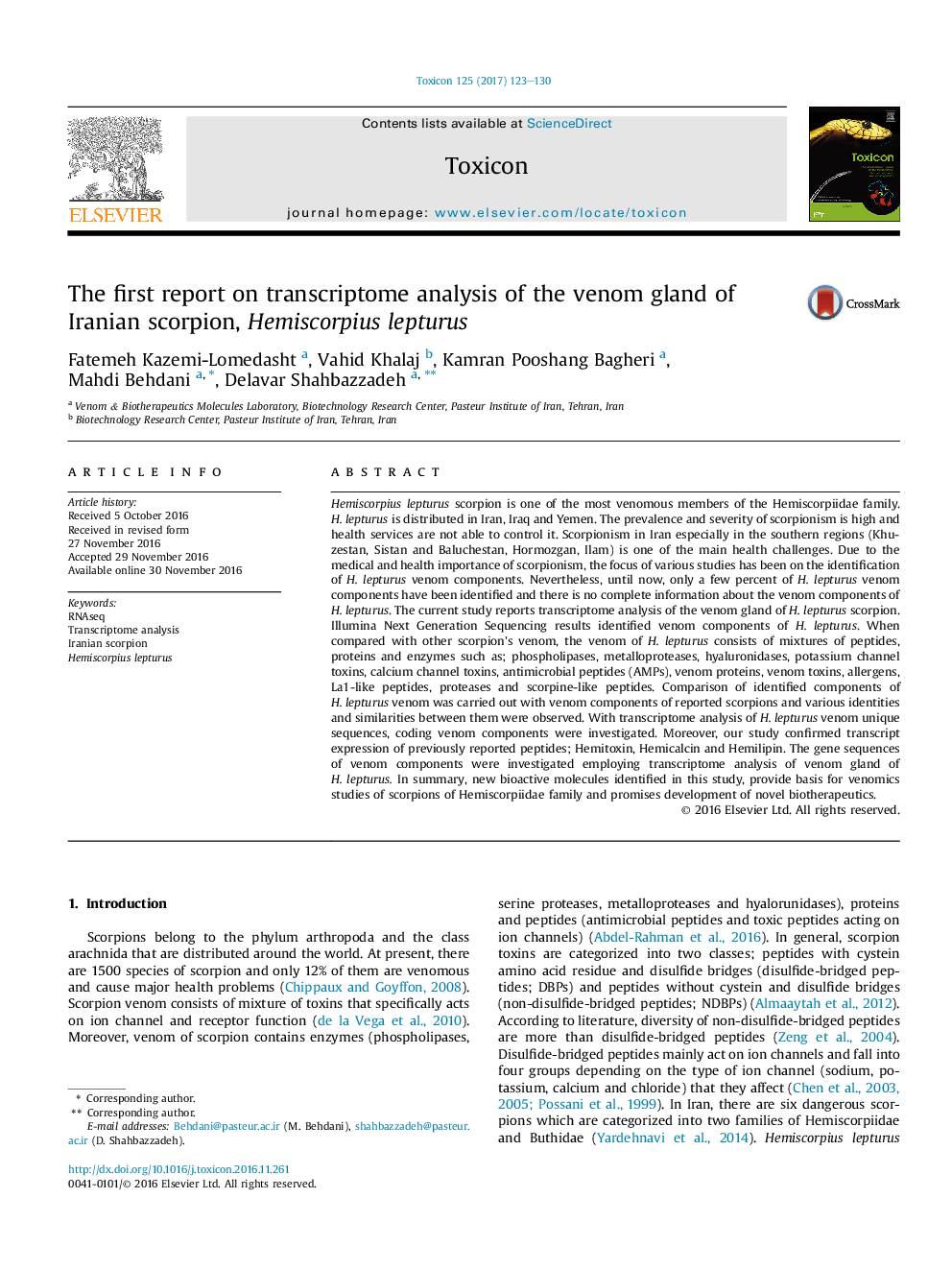| کد مقاله | کد نشریه | سال انتشار | مقاله انگلیسی | نسخه تمام متن |
|---|---|---|---|---|
| 5519429 | 1544111 | 2017 | 8 صفحه PDF | دانلود رایگان |

- The current study reports transcriptome analysis of the venom gland of H. lepturus scorpion using Illumina next generation sequencing.
- Illumina Next Generation Sequencing results identified venom components of H. lepturus.
- New bioactive molecules identified in this study, provide basis for venomics studies of scorpions of Hemiscorpiidae family and promises development of novel biotherapeutics.
Hemiscorpius lepturus scorpion is one of the most venomous members of the Hemiscorpiidae family. H. lepturus is distributed in Iran, Iraq and Yemen. The prevalence and severity of scorpionism is high and health services are not able to control it. Scorpionism in Iran especially in the southern regions (Khuzestan, Sistan and Baluchestan, Hormozgan, Ilam) is one of the main health challenges. Due to the medical and health importance of scorpionism, the focus of various studies has been on the identification of H. lepturus venom components. Nevertheless, until now, only a few percent of H. lepturus venom components have been identified and there is no complete information about the venom components of H. lepturus. The current study reports transcriptome analysis of the venom gland of H. lepturus scorpion. Illumina Next Generation Sequencing results identified venom components of H. lepturus. When compared with other scorpion's venom, the venom of H. lepturus consists of mixtures of peptides, proteins and enzymes such as; phospholipases, metalloproteases, hyaluronidases, potassium channel toxins, calcium channel toxins, antimicrobial peptides (AMPs), venom proteins, venom toxins, allergens, La1-like peptides, proteases and scorpine-like peptides. Comparison of identified components of H. lepturus venom was carried out with venom components of reported scorpions and various identities and similarities between them were observed. With transcriptome analysis of H. lepturus venom unique sequences, coding venom components were investigated. Moreover, our study confirmed transcript expression of previously reported peptides; Hemitoxin, Hemicalcin and Hemilipin. The gene sequences of venom components were investigated employing transcriptome analysis of venom gland of H. lepturus. In summary, new bioactive molecules identified in this study, provide basis for venomics studies of scorpions of Hemiscorpiidae family and promises development of novel biotherapeutics.
113
Journal: Toxicon - Volume 125, January 2017, Pages 123-130